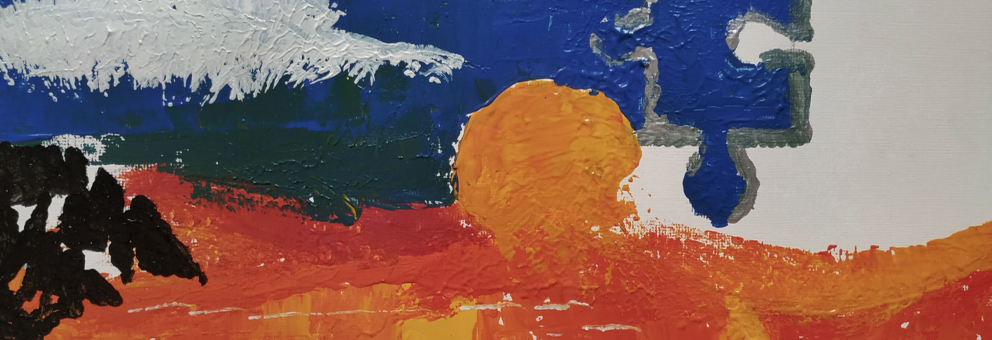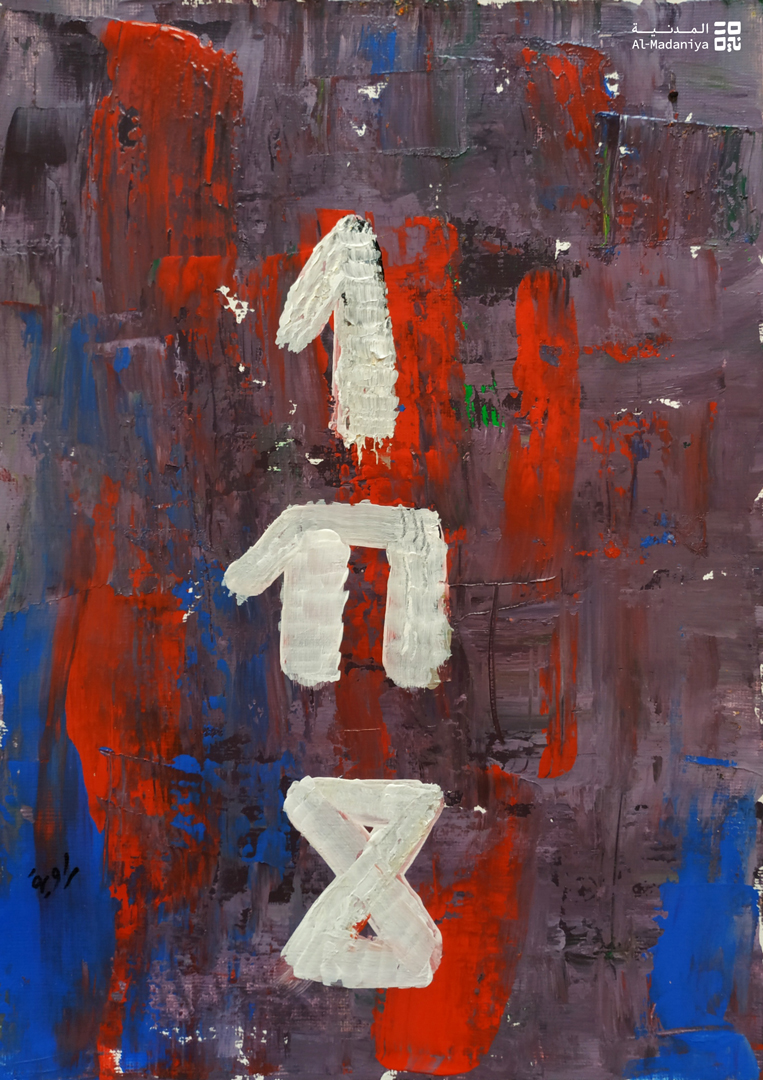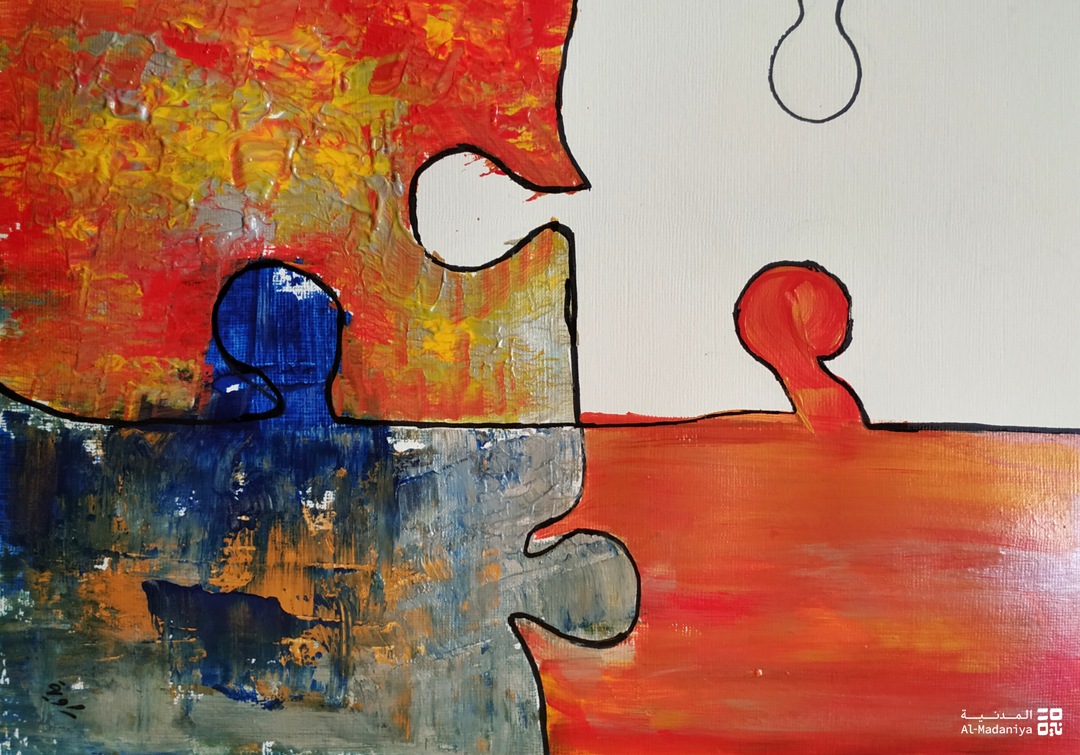
This post is also available in: العربية (Arabic)
Riddles are a folk art form. But they are also an educational tool and recreational mind exercise with diverse cultural and cognitive dimensions. It is a form of folklore, revealing much about the perceptions of cultural groups. For a long time, riddles have been a part of local cultural heritage. They are a traditional art form with a cultural value, and other forms of folk art, like legends and folk stories, have included riddles as a key part of their plotlines. Riddles interact with popular sayings and jokes in token representation and their functionality at times. It is clear that riddles are the least documented and studied of the folk arts, until now. This article tries to present an analytical reading of riddles in folk poetry, using examples from across Yemeni governorates.
The methodological framework for the study of folk riddles
Riddles take one of three forms: they are either in prose, rhyming, or in the form of a couplets. There have been a number of studies that have aimed to define and analyze folk riddles, and they all fall into three main categories. The first focuses on the riddle, whether on its grammatical structure or its content, while the second focuses on the psychological and sociological functions of the knowledge content of the riddle within the context of its performance, while the third focuses on the linguistic aspects of the riddle, or studying it as a linguistic action.[1]
Through an analysis of the basic components of a riddle as a linguistic message, five components have been specified. The first is the riddle session, or the occasion during which the riddle is presented; this is the performative context. The second is the riddling, which is the process of a statement becoming a riddle; this has two parts, the first is linguistic and the second is cultural. The third component is the riddler, with the Yemeni term being taken from al-Baradouni, and this component is the individual who is performing/producing the riddle.[2] The fourth component is the riddlee, or the person hearing the riddle and who is expected to give the answer. The fifth component is the block, which is the impact that the riddle has as a result of the riddle not being solved.[3]

Folklorists describe five elements in the structure of the riddle. The first of these is the introductory framing of the riddle, or the introductory language of the riddle. The second is the name component, or the function that is mentioned within the riddle. The third is the descriptive component that is presented by the riddle, and it includes a contradiction of some sort. The fourth is the distracting or blocking component. And the fifth element is the concluding framing.[4]
With regards to the cognitive analysis of the riddle, riddles are considered key to understanding the methods used by a culture to organize their understanding, and this is why the act of riddling is a cognitive dialectic. In addition, the riddle is a symbolic action that embodies and suggests strategies to face problems or difficult situations. The objective of all studies of symbolic actions is to uncover these basic patterns that are summarized in many fields of activities.[5]
Based on perceptual psychology, a riddle contains a Gestalt form[6] that is created by the compatibility of the description in the riddle and the object it is referring to.[7]
Our folk riddles
Below are examples of prose and rhyming folk riddles; the reader should take into account that the riddles appearing in this articleas part of an oral culutre
- Riddle: It can carry the greatest weights, but cannot carry a nail. (The ocean.)
- Riddle: You place your hand on its stomach, and it’s back is on your stomach. (A guitar.)
It can be seen in this riddle how a clever trick is used to distract the attention of the riddlee through the use of body parts, which leads to an understanding that is far from what the riddle actually means. Also, the use of ‘you’ in the riddle leads the riddlee to understand that this is something that is touching them personally. - Riddle: A white chicken laid a white egg on the roof of a white masjid. (The dome of the masjid.)
Usually, masjid domes are white because they are covered in plaster, and masjids are usually white on the outside. The excessive rhyming and alliteration in the language, in addition to the fantastical image that the riddle paints, of an extremely large chicken, implies that this is, first and foremost, a comedic riddle. The ambiguity here is one in the sounds that are repeated and sound like the word ‘white’, and this ambiguity, linguistically, could be in one of three forms: the sounds, the formation of the words, and the formation of the sentence.[8] - Riddle: Something that runs with its intestines behind it. (Sewing needle.)
The metaphor is the most important rhetorical method that is used in a riddle. “A riddle, at its core, is a metaphor, and it started as a result of cognitive advances in understanding links, comparing, and being aware of similarities and differences. In addition to that, riddles contain comedy that is a result of the riddle containing surprising elements.”[9]

The bazel… The art of poetic riddles
In Yemen, poetic riddles are popular in different areas, especially in the middle regions and parts of the south, specifically southern Ibb, al-Baydha, Dhamar, Yafa and Shabwa. The art of writing poetic riddles has developed and is close to, at times even integrated into, poetry and zamils in the areas where folk poetry is still being produced and performed. Riddles can also be found during the balah sessions,[10] where poets exchanged riddles and tried to solve them within the context of a conversation, starting with the introduction of a riddle through poetry. This is too wordy – perhaps edit down to: This is called ‘the invention’, and the answer to the riddle must be given as a poetic response.
In this context, folk poetic riddles have different names in different areas: ‘riddles’, ‘guessing games’, or ‘bazel’. Bazel can be applied to two overlapping definitions within the content of the riddle, is the name for a riddle that is presented in the form of poetry, and the object of the riddle itself.
The literal meaning of the word bazel in Arabic is a hawkor a camel bearing its teeth, but the word is not defined as such in the spoken language.[11] The word has taken on an idiomatic meaning to refer to riddles that are presented in poetry. The balah sessions are environments for the exchange of bazels, but, in the areas that do not have balah traditions, the riddles performance is different, with the formal elements of the balah/bazel session remaining the same. Al-Baradouni classified the riddles that are included into three categories. The first is a challenge in the form of poetry, such as the balah/bazel; the second is a puzzle for the purpose of entertainment; while the third is a social gathering that might have organized riddles in the form of a story.[12] It should be noted that these categories might overlap depending on the social context. In addition, there have been many changes to these traditional riddle gatherings due to the spread of social media, creating a new medium for the exchange of riddles, shifting the exchange from face-to-face oral exchange to interactive written exchange.
Usually a bazel is presented in more than two verses of poetry. Folk poets in areas where riddle poetry is popular focus a lot on writing and documenting bazels and challenging other poets to find the answer and write a poem in response that uses the same style of poetry, in the form mentioned above (the invention and the answer). Sometimes the poet will include the bazel within a folk poem, mentioning the bazel in the introduction to the zamil before presenting the main idea of the zamil. The bazel usually starts with a famous opening line, “Let me tell you about a bazel”, “Can you guess this bazel?” or “Can you guess this thing?” In this way, the performer or poet draws the attention of the listener to hear the riddle. The word in the first line in Arabic means ‘to give a ruling on’, or ‘the answer to’, the riddle that comes next.[13]
If the subject of the riddle is a feminine noun, the riddle is introduced using other phrases, like “Let me tell you about a young female camel”, “Let me tell you about a virgin”, or “Let me tell you about a girl”.

The bazels of Shabwa
Shabwa abounds with a rich oral tradition, represented by the folk poetry, with riddles being one of its main forms. Here, we will get to know a few examples.
Riddle:
In the following bazel, you will notice how the distraction element can be a result of the linguistic structure of the bazel. The linguistic code, and not the actual message, is the main component of the bazel.
Oh guesser, I will give you a riddle of many that are one,
Their intention is one, and their objective is the same,
A number of them, some living and some are solid,
And their control is in the hands of the Lord, who dispenses them,
They come throughout the week, from Sunday to Sunday,
And you do not know which one is the closest.
(Answer: Causes of death.)
Here, the grammatical makeup of the poem plays a role in misleading the listener, whether by using the object ‘it’ or by mixing up the singular and plural nouns. In almost every line, the Arabic preposition min is used, confusing the listener and making it difficult to differentiate the subject and predicate in the phrase. It is also clear that the poet is referencing a well-known verse of poetry: he who does not die by the sword, will die of something else/ There are numerous causes, but it is death all the same.
A riddle by poet, Muhammad Al Qadri:
What are the three white objects that protect you,
From a stab by an ignorant person or harm from behind you,
They see your mistakes, but they will not tell you,
They do not trade secrets, in privacy or in public.
(Answer: The three mirrors in a car, the two sideview mirrors and the rearview mirror.)
The riddle allows a cultural group to experiment with the principles of order, and it uncovers some of the principles that beset categorization in social and cognitive actions. It can also show the role that ambiguity plays in the process of categorization.
As we saw in the previous riddle, the element of ‘blocking’ leads to interpretation through different frames of reference at the same time, and these are separate frames by their nature, but the ambiguity makes them seem close to each other.[14]
The following is an ‘invention’ poem by the poet Salem Lanjaf al-Marzaqi:
Can you guess about an eater that eats without being satiated
It can destroy the house if they sleep and neglect it
It fasted from meat once, be clever and listen
On that day its whole description changed.
The ‘invention’ includes a riddle, and it is a complex one, because it requires first of all to know what this ‘eater’ is. After the name component comes the descriptive component, which describes the object. This requires, after the first step, the occasion when this eater fasted from eating.
The answer comes from a poet, Nasser Harboush al-Mazraqi:
The answer to your riddle is a fire if it is lit
It destroys everything around it completely
It fasted because it was ordered by He who is worshipped by all
Who, if He orders a work, does not commit injustice to the doer
It fasted from pure flesh that Allah protected and interceded for
From its heat and He said
Be cool and safe for Abraham so as not to scare him
And it turned from heat into a complete cold.
The answer comes in the same style of prose, and the response presents the answer in the same gradual pattern. The eater is the fire, and it fasted when it did not burn Prophet Abraham, as told in the story in the Quran: “O fire! Be cool and safe for Abraham!” (Quran 21:69).
Riddle:
Can you guess about a masked bazel,
That dives in the water and does not remove its mask,
Oh, how many wells it has bathed in,
And it cries tears of blood if it loses its bones.
Answer: A teabag, which is known locally as Lipton, because of the famous tea brand.
In most cases, the bazel does not seem to be a question, but is actually giving information. This is where the importance of the introductory part comes in as an alternative for the questions that usually prepare the context for a bazel. In the previous bazel, the object is described as a ‘masked bazel’, and this is the beginning of the riddle. The bazel, or the thing that is mentioned, is masked, which is usually a feminine characteristic. After that, the bazel continues to present the description and characteristics of the object, until the last image that is presented, with a masked object crying blood. This image is the distracting one, or the one that presents ambiguity, until it becomes clear in the answer: it is a tea bag that we put in hot water, and it starts to gradually redden the water, hence the “crying tears of blood”. This is a popular saying to represent feelings of intense sadness, and the poet uses it as an artistic tool in the riddle.

Bazels in Dhamar
Among Yemeni regions known for the art of poetic riddles, Dhamar has a unique heritage filled with passed-down traditions of folk poetry, like zamils and balahs. The bazel is still remarkably popular there. A folk poet, Ali Saleh al-Qa’shami, tells an anecdote of this popularity. One time, the famous Komani Records released a recording that included a riddle in a poem, and then called for its audience and poets to respond. The prize for the winning answer would be an automatic rifle, and the poem received more than 100 answers from Dhamar and the surrounding governorates. After reviewing the answers and poems, a draw was conducted and the winner received the prize.
This riddle, the ‘invention’, stated: Can you guess of a home made up of five well-built buildings / and four guard posts surrounding, and it has provisions.
The object is the home, and the description is that it has five buildings with four guard posts. The riddle requires an answer using the same meter as the riddle:
The home is Islam and its famous pillars
the source of good is within Islam.
The four guard posts are the well-known and just schools of thought
Pray, give charity, make pilgrimage, and fasting.
Usually, the author of the riddle specifies if the riddle is related to sharia or popular knowledge. The first means that the reference of the riddle is from the Quran or religious rulings, while the second means that it is something that people know.
Riddle:
Can you guess of a girl that drinks without eating, and half of all beauty is in her current form
She does not know sleep or get bored, and does not have a mother or a father to control her, or a guardian
She mingles with the people, and does not get shy or disgraced, and can be alone with any man
She is the only one that gives, and is never stingy, and people around her are worried or happy
She is a princess, presiding over everyone, and the crown on her head is not expensive
She does not have a face, hands, or even feet, and her stomach is made up of a solid in the back and the front.
The answer: A water-pipe.
In conclusion, the formation of a folk riddle is not an individual action, but is a thought projection and part of an old folk tradition.[15] For that reason, it might seem like the metaphor of the riddle is not close to any familiar mental links that we have. Therefore, it can be said that the riddle is a part of a collective cognitive process subject to unique and deep-rooted characteristics, and is not just an individual test, as is the case with modern riddles.
[1] Green, Thomas A and W.J. Pepicello. ‘The Folk Riddle: A Redefinition of Terms.’ Western Folklore,Vol.38,No.1 (January 1979) p. 3. JSTOR: www.jstor.com/stable/1498981
[2] Al-Baradouni, Abdullah. Folk Riddles, Part of the Book: Popular Culture: Yemeni Sayings and Experiences. Dar Al Mamoun for Publishing.
[3] Green, Thomas A, and W.J. Pepicello, 1979.
[4] Green, Thomas A, and W.J. Pepicello, 1979. p. 3
[5] Ibid. pg. 5.
[6] Gestalt: A German word that means a form or a picture, and it is a theory in cognitive psychology that states a whole can only be understood through its parts.
[7] Green, Thomas A, and W.J. Pepicello p. 4.
[8] Pepicello, W. J. “Linguistic Strategies in Riddling.” Western Folklore. 1980. Vol 39. No.1 (January 1980) p2. JSTOR: www.jstor.com/stable/1499760.
[9] Ibrahim, Nabilah. The Forms of Expression in Folk Art. Dar Nahdhat Masr. p. 215.
[10] Balah: A folk poetry art, famous in the middle regions of Yemen.
[11] https://www.almaany.com/ar/dict/ar-ar/%D8%A8%D8%A7%D8%B2%D9%84/.
[12] Al Baradouni, Abdullah. Popular Culture: Yemeni Sayings and Experiences. p. 88.
[13] Al Maany Dictionary, https://www.almaany.com/ar/dict/ar-ar/%d8%a7%d9%81%d8%aa%d9%89/
[14] Green, Thomas, p. 5.
[15] Sendrovich, Savely. The Riddle of The Riddle. Routledge. p. 12.
Translated by: Abdullah al-Ruwaishan




